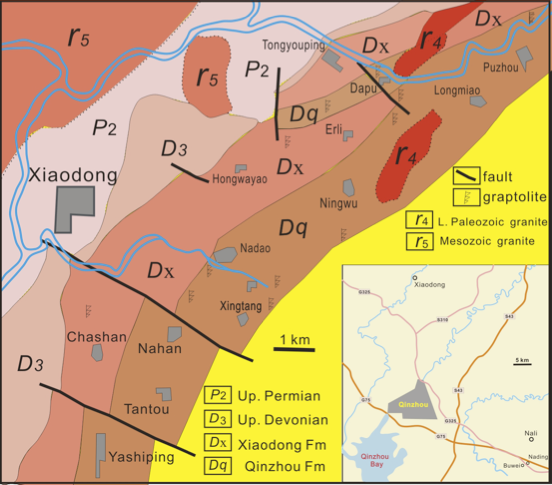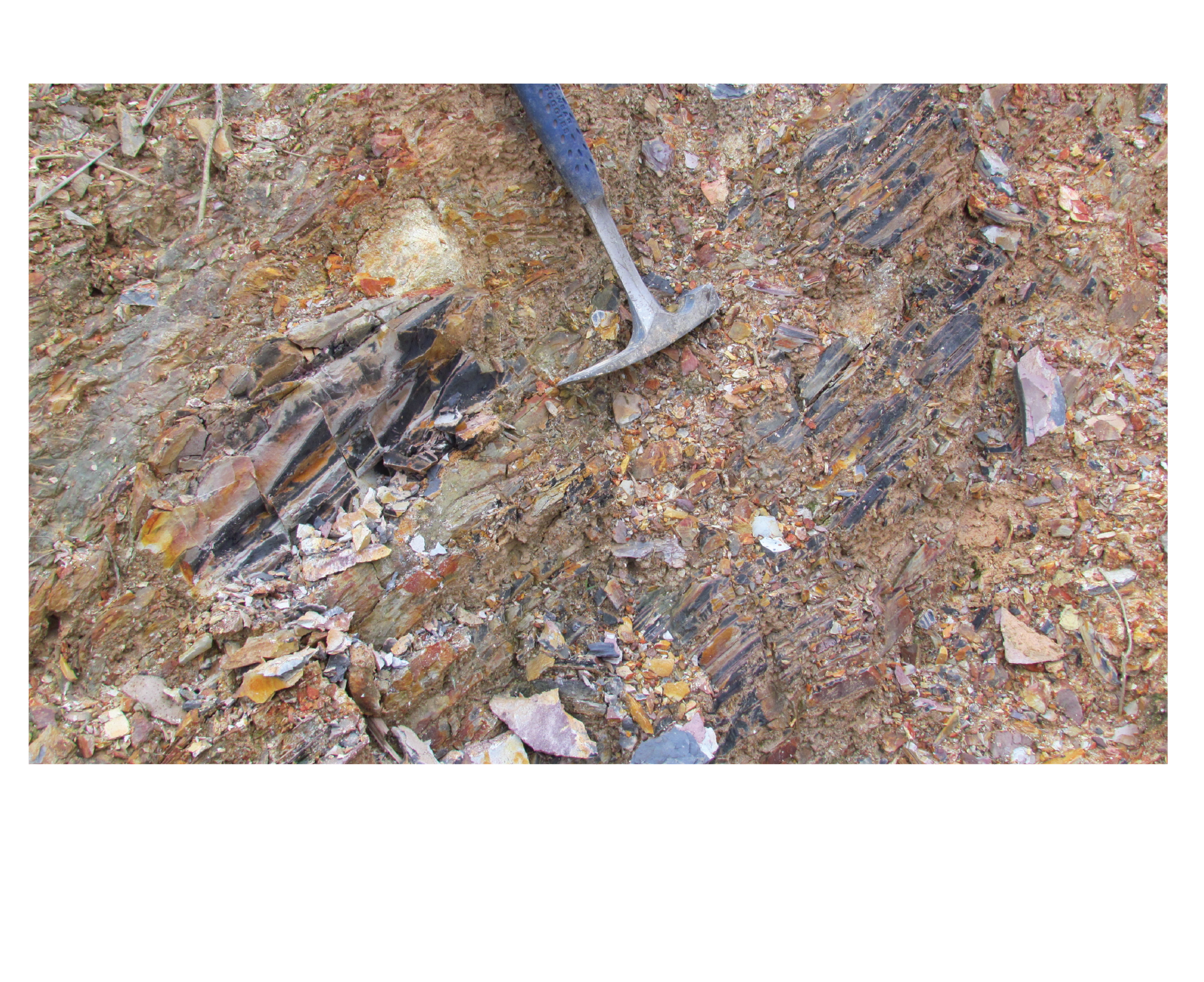Qinzhou Gr
Type Locality and Naming
The name was published in 1978 by Wang Xiafeng, who described some Pridoli and Lochkovian graptolites. No type section was given due to the outcrops are very poor, but deduced by the Guangxi Regional Geological Survey in 1974 from southern side of Daoliucun village of Bancheng Town, Qinzhou, where some graptolites were found from isolated outcrops of sericite hornfels. Several reference sections near Nali area were proposed from Nading and Buwei by Mu et al. (1988), from Daling by Bai et al. (1982) and from Puzhou and Nadao of Xiaodong Village by Mu et al (1988) and GRGS (1974), respectively. The Daling section located at the place between Buwei and Nading villages is chosen as new reference section here.
During geological mapping by Guangxi Regional Geological Survey (1986) in Yulin area, the similar deposits to the Qinzhou Group has been subdivided into the Beijuntang Fm, the Lianghetang Fm and the Zhangmu Fm. Someone suggested that so-called Beijuntang Fm is equal to Qinzhou Gr with same lithology and pelagic fossils. (used in nearby Yulin column to NE; and these 3 formations are described separately in this Lexicon).
Synonym: Qinzhou Fm
[Figure Simplified geological map of Xiaodong area showing the distribution of Qinzhou Fm and Xiaodong Fm. The map on the lower right shows the geographical position of Xiaodong Town]
Lithology and Thickness
Mudstone. The Group at Daling section is composed from base to top of: (1) light gray medium- to fine-grained well-sorted sandstone with horizontal bedding, intercalated with thin sandy mudstone, 51 m thick; (2) dark gray thin-bedded silty mudstone, yielding Monograptus cf. uniformis, 26 m; (3) purple-red, yellow brown alternation of siltstone and gray mudstone, 43 m; (4) cover 42 m; (5) black silty shale containing dacryconarids, more than 153 m. At the Daoliucun section, it is 600 m thick.
[Figure - Outcrop of the basal Qinzhou Formation in the Ludizhu Village of Nali Town.]
[Figure Outcrop of siliceous rocks of Qinzhou Formation with dacryoconarid fossils near the Nading Village of northern Qinzhou, along the G325 Highway. Length of hammer 28 cm.]
Relationships and Distribution
Lower contact
The formation rests conformably on the Fangcheng Gr of Upper Silurian.
Upper contact
Faulted contact to the overlying Xiaodong Fm.
Regional extent
Scattered outcrops of Qinzhou and Xiaodong Groups are distributed on a narrow belt extending NE-SW direction from Jishiping to Daoliu villages in the southeast of Xiaodong-Taiping Towns of Qinzhou County. In addition, it also occurs on the south of Nali Town of Qinzhou County around Buwei, Daling, Ludizhu villages and along the G325 State Road..
GeoJSON
Fossils
Two graptolite zones are recognized, the Monograptus cf. uniforms Z. with M. cf. angustidus and M. microdon below, and the Neomonograptus hercynicus Z. above. Paranowakia bohemica occurs in middle and upper parts. Plus fragments of trilobites, tentaculites, and plants. Note that Mu et al. (1983, 1988) pointed out that the identification of Monograptus uniformis is unreliable and most species are M. aequabilis (Pribyl) and M. microdon Richter, which is commonly seen in M. uniformis zone.
[Figure - Monograptus uniformis Pribyl from the basal Qinzhou Formation near Daoliu Village, Xiaodong Town of Qinzhou (after Wang, 1978). 1, 2- drawing. X3; 3, 4 photos, X3]
Age
Depositional setting
The lithology and fossils are typically indicative for the deep-water basin environment.
Additional Information



